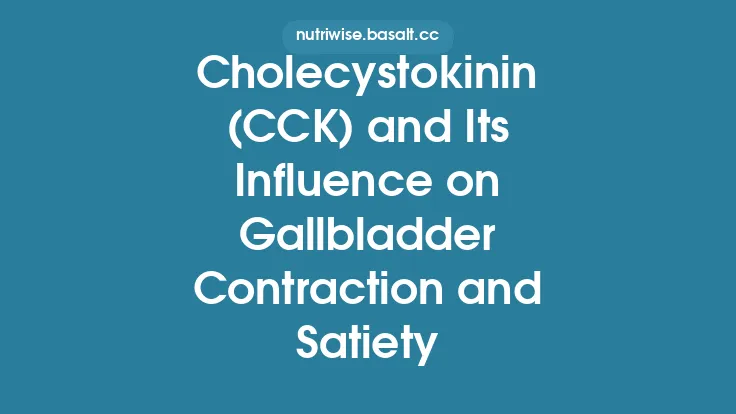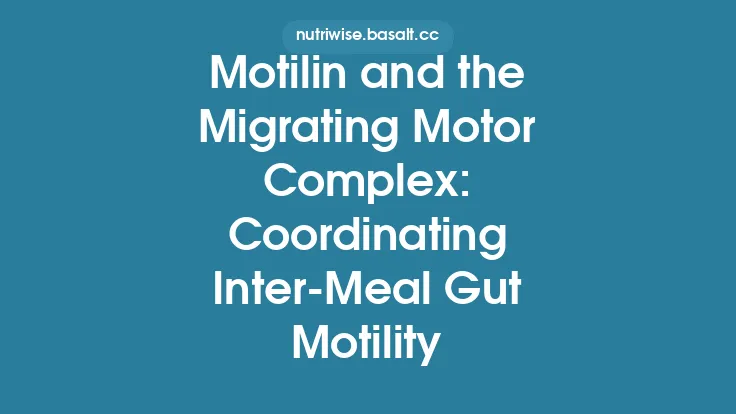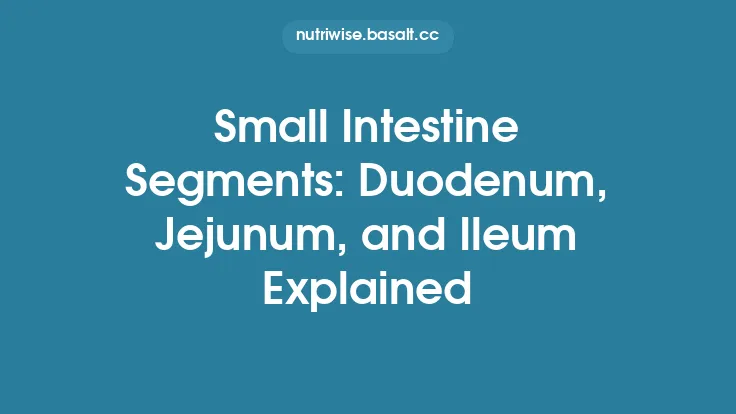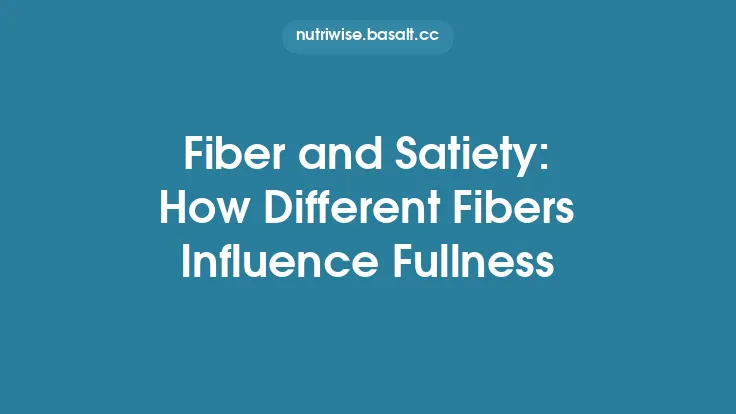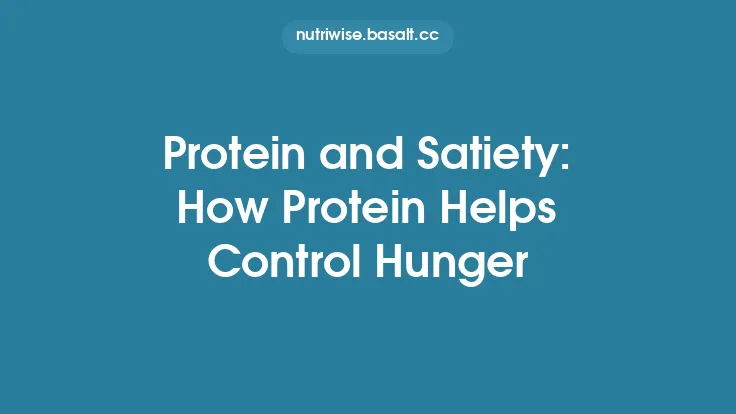The regulation of food intake is a tightly coordinated process that hinges on a network of peripheral signals originating in the gastrointestinal (GI) tract and central circuits that evaluate energy status. Among the most influential peripheral messengers are gut‑derived hormones that rise and fall in response to the presence, composition, and volume of ingested nutrients. Four of these hormones—ghrelin, cholecystokinin (CCK), glucagon‑like peptide‑1 (GLP‑1), and peptide YY (PYY)—have been identified as primary drivers of satiety signaling. Understanding how each hormone is produced, how it reaches its target sites, and how it modulates neuronal activity provides a foundation for both basic physiology and the development of therapeutic agents aimed at obesity, type‑2 diabetes, and related metabolic disorders.
Overview of Satiety Signaling in the Gut
Satiety hormones belong to the broader class of enteroendocrine peptides, secreted by specialized epithelial cells scattered throughout the stomach, small intestine, and colon. Their release is triggered by mechanical stretch, nutrient sensing (glucose, fatty acids, amino acids), and hormonal cross‑talk. Once secreted, these peptides enter the circulation or act locally on afferent nerve endings, ultimately influencing hypothalamic nuclei such as the arcuate nucleus (ARC) and the paraventricular nucleus (PVN). The net effect is a reduction in orexigenic (appetite‑stimulating) neuronal firing and an increase in anorexigenic (appetite‑suppressing) signaling, thereby curbing further food intake.
Key characteristics shared by the four hormones discussed here include:
| Feature | Ghrelin | CCK | GLP‑1 | PYY |
|---|---|---|---|---|
| Primary source | X/A‑like cells (fundus) | I‑cells (duodenum, jejunum) | L‑cells (ileum, colon) | L‑cells (ileum, colon) |
| Release pattern | Pre‑meal rise, post‑meal fall | Immediate post‑meal surge | Gradual rise peaking 30‑60 min after meal | Peaks 1‑2 h post‑meal |
| Main receptor | GHS‑R1a (GHSR) | CCK‑A (CCK1R) | GLP‑1R | Y2R (NPY2R) |
| Primary action | Stimulates hunger | Slows gastric emptying, promotes satiety | Enhances insulin secretion, slows gastric emptying, reduces appetite | Reduces appetite, slows gastric motility |
| Half‑life (circulating) | ~30 min (active) | ~5 min | ~1–2 min (active) | ~2 h (total) |
The temporal dynamics of each hormone create a layered satiety signal: CCK provides an early “stop‑eating” cue, GLP‑1 and PYY reinforce satiety during the later phases of digestion, while ghrelin’s pre‑meal rise primes the brain for food seeking. The interplay among these signals ensures that energy intake is matched to physiological needs.
Ghrelin: The Hunger Hormone and Its Counter‑Regulatory Role
Synthesis and Activation
Ghrelin is a 28‑amino‑acid peptide uniquely acylated on its third serine residue with an n‑octanoic acid chain—a modification catalyzed by the enzyme ghrelin O‑acyltransferase (GOAT). This acylation is essential for binding to the growth hormone secretagogue receptor 1a (GHSR‑1a). Ghrelin‑producing X/A‑like cells reside primarily in the gastric fundus, but smaller populations are found in the proximal intestine and pancreas.
Secretion Triggers
- Fasting state: Circulating ghrelin rises during prolonged caloric restriction, reaching a nadir within 30–60 min after a meal.
- Macronutrient sensing: Low glucose and low plasma insulin levels stimulate ghrelin release; conversely, hyperglycemia and insulin suppress it.
- Circadian influence: Ghrelin exhibits a modest nocturnal rise, aligning with typical feeding patterns in diurnal species.
Central Mechanisms of Action
GHSR‑1a is densely expressed in the ARC, where it co‑localizes with neuropeptide Y (NPY) and agouti‑related peptide (AgRP) neurons—key orexigenic populations. Binding of ghrelin to GHSR‑1a triggers Gq/11‑mediated phospholipase C activation, leading to intracellular calcium influx and enhanced NPY/AgRP transcription. The net effect is an increase in appetite and a reduction in energy expenditure.
Peripheral Effects
Beyond central appetite stimulation, ghrelin influences:
- Gastric motility: Promotes gastric emptying, facilitating nutrient delivery.
- Growth hormone release: Stimulates pituitary somatotrophs, linking energy status to anabolic processes.
- Glucose homeostasis: Modulates pancreatic β‑cell function, albeit with modest effects compared to GLP‑1.
Clinical Relevance
Elevated fasting ghrelin levels are observed in conditions of chronic energy deficit (e.g., anorexia nervosa) and in some forms of cachexia. Conversely, reduced ghrelin signaling is implicated in obesity, where post‑prandial suppression may be blunted. Pharmacologic antagonism of GHSR‑1a is under investigation as a potential anti‑obesity strategy, though concerns about growth hormone axis disruption remain.
Cholecystokinin (CCK): Early Satiety Signal
Cellular Origin and Isoforms
CCK is synthesized by I‑cells located in the duodenal and jejunal mucosa. The peptide exists in multiple molecular forms (CCK‑8, CCK‑33, CCK‑58), with CCK‑8 being the most biologically active in satiety signaling. Post‑translational processing yields sulfated and non‑sulfated variants; the sulfated form exhibits higher affinity for the CCK‑A receptor (CCK1R).
Stimuli for Release
- Luminal nutrients: Particularly fatty acids and partially digested proteins stimulate CCK secretion via G‑protein‑coupled receptors (e.g., GPR40, GPR120) on I‑cells.
- Mechanical stretch: Distension of the proximal small intestine contributes to CCK release.
Receptor Distribution and Signal Transduction
CCK1R is expressed on vagal afferent terminals, pancreatic acinar cells, and gallbladder smooth muscle. Binding activates Gq proteins, leading to phospholipase C activation, inositol trisphosphate (IP3) generation, and intracellular calcium release. In the context of satiety, activation of CCK1R on vagal afferents transmits a rapid “fullness” signal to the nucleus tractus solitarius (NTS), which then projects to hypothalamic appetite centers.
Physiological Outcomes
- Gastric emptying: CCK slows gastric outflow, prolonging the presence of nutrients in the stomach and enhancing satiety.
- Bile and pancreatic enzyme secretion: Facilitates digestion, indirectly influencing nutrient sensing.
- Satiety induction: Administration of exogenous CCK reduces meal size in both animal models and humans, an effect that is dose‑dependent and reversible.
Therapeutic Exploration
Synthetic CCK analogs have been evaluated for weight‑loss potential, but rapid degradation and tachyphylaxis limit clinical utility. Research continues into long‑acting CCK1R agonists and combination therapies that pair CCK signaling with other satiety hormones to achieve synergistic effects.
Glucagon‑Like Peptide‑1 (GLP‑1): Multifaceted Incretin and Satiety Mediator
Biosynthesis and Processing
GLP‑1 is derived from the proglucagon gene, which is differentially processed in intestinal L‑cells (via prohormone convertase 1/3) and pancreatic α‑cells (via prohormone convertase 2). The predominant active forms are GLP‑1(7‑36)NH₂ and GLP‑1(7‑37), both possessing a short half‑life due to rapid cleavage by dipeptidyl peptidase‑4 (DPP‑4).
Nutrient‑Driven Secretion
- Carbohydrates: Glucose absorption stimulates GLP‑1 release through sodium‑glucose cotransporter‑1 (SGLT1)–mediated depolarization.
- Lipids: Long‑chain fatty acids activate GPR120 on L‑cells, enhancing GLP‑1 secretion.
- Proteins: Certain amino acids (e.g., glutamine) also provoke GLP‑1 release.
Receptor Signaling
GLP‑1R is a class B G‑protein‑coupled receptor coupled primarily to Gs proteins, leading to adenylate cyclase activation and increased cyclic AMP (cAMP). In the central nervous system, GLP‑1R is expressed in the hypothalamus, brainstem, and reward circuitry (ventral tegmental area). Elevated cAMP in these regions reduces NPY/AgRP activity and promotes pro‑opiomelanocortin (POMC) neuron firing, culminating in appetite suppression.
Dual Peripheral and Central Actions
- Insulinotropic effect: Enhances glucose‑dependent insulin secretion, improving post‑prandial glycemia.
- Gastric motility: Delays gastric emptying, contributing to prolonged satiety.
- Neuroprotective signaling: While beyond the scope of this article, GLP‑1R activation influences neuronal survival pathways.
Pharmacologic Exploitation
GLP‑1 analogs (e.g., exenatide, liraglutide, semaglutide) resist DPP‑4 degradation, providing sustained receptor activation. These agents produce significant weight loss (5–15 % of body weight) and improve glycemic control, underscoring the therapeutic relevance of augmenting endogenous GLP‑1 signaling. Emerging oral semaglutide formulations further expand accessibility.
Peptide YY (PYY): Post‑Prandial Satiety Hormone
Origin and Molecular Forms
PYY is co‑secreted with GLP‑1 from L‑cells, existing primarily as PYY₁₋₃₆ (full‑length) and the truncated, biologically active PYY₃₋₃₆. The latter form preferentially binds the Y₂ receptor (Y2R), an inhibitory Gᵢ‑coupled receptor expressed on NPY/AgRP neurons.
Release Kinetics
PYY levels rise gradually after a meal, peaking 1–2 hours post‑ingestion. The magnitude of the response correlates with caloric load and especially with dietary fat content, reflecting the lipid‑sensing capacity of L‑cells.
Central Mechanisms
Binding of PYY₃₋₃₆ to Y2R on NPY/AgRP neurons reduces their firing rate, thereby disinhibiting downstream POMC neurons that promote satiety. This “brake” on orexigenic pathways complements the actions of GLP‑1 and CCK.
Peripheral Contributions
- Gastric motility: PYY slows gastric emptying, similar to CCK and GLP‑1, reinforcing the post‑prandial satiety window.
- Energy expenditure: Some animal studies suggest modest increases in thermogenesis, though human data are less conclusive.
Clinical Implications
Individuals with obesity often exhibit attenuated post‑prandial PYY responses, suggesting a potential defect in satiety signaling. Administration of exogenous PYY₃₋₃₆ reduces food intake in controlled settings, but rapid degradation and the need for parenteral delivery limit its therapeutic development. Combination formulations that pair PYY with GLP‑1 analogs are under investigation to harness additive satiety effects.
Integration of Hormonal Signals in the Central Nervous System
The hypothalamic arcuate nucleus serves as a convergence hub where peripheral satiety hormones intersect with intrinsic neuropeptide circuits. Key integration points include:
- Receptor Co‑Localization: NPY/AgRP neurons express GHSR‑1a (ghrelin), Y2R (PYY), and, to a lesser extent, GLP‑1R, allowing simultaneous modulation by opposing signals.
- Signal Hierarchy: Early post‑prandial cues (CCK) act via rapid afferent pathways, while later signals (GLP‑1, PYY) provide sustained inhibition of orexigenic neurons.
- Cross‑Talk with Energy Sensors: Hormones such as leptin and insulin, though not the focus here, interact with the same neuronal populations, creating a multilayered regulatory network.
- Neuroplasticity: Chronic exposure to high‑fat diets can desensitize receptor signaling (e.g., down‑regulation of GLP‑1R), contributing to dysregulated appetite control.
Understanding the temporal and spatial dynamics of these interactions is essential for designing interventions that restore or amplify physiological satiety signaling.
Clinical Relevance and Therapeutic Exploitation
Obesity Management
- GLP‑1R agonists have become first‑line pharmacologic agents for weight reduction, with semaglutide achieving >15 % body‑weight loss in clinical trials.
- Combination therapies (e.g., GLP‑1 + CCK analogs) are being evaluated to target multiple satiety pathways simultaneously, aiming for additive or synergistic effects while minimizing dose‑related side effects.
Type‑2 Diabetes
- Incretin‑based therapies (GLP‑1 analogs, DPP‑4 inhibitors) improve glycemic control by enhancing insulin secretion and reducing glucagon release, with the added benefit of modest weight loss.
Cachexia and Anorexia
- Ghrelin agonists (e.g., anamorelin) are under clinical investigation to stimulate appetite in cancer‑related cachexia, leveraging ghrelin’s orexigenic properties while monitoring growth hormone axis effects.
Bariatric Surgery Insights
Post‑bariatric patients exhibit amplified post‑prandial GLP‑1 and PYY responses, contributing to the sustained weight loss observed after procedures such as Roux‑en‑Y gastric bypass. These hormonal shifts provide a mechanistic template for non‑surgical interventions.
Methodological Considerations in Hormone Measurement
Accurate quantification of satiety hormones is pivotal for both research and clinical monitoring. Key points include:
- Sample Handling: Ghrelin and GLP‑1 are highly labile; plasma must be collected in tubes containing protease inhibitors (e.g., aprotinin) and acidified to prevent degradation.
- Assay Selection: Enzyme‑linked immunosorbent assays (ELISAs) are common, but mass‑spectrometry offers higher specificity, especially for distinguishing acylated versus des‑acyl ghrelin.
- Timing of Collection: Because hormone levels fluctuate rapidly post‑prandially, standardized meal challenges (e.g., 500 kcal mixed macronutrient test) are employed to generate comparable kinetic profiles.
- Normalization: Hormone concentrations are often expressed relative to body weight or lean mass to account for inter‑individual variability.
Future Directions in Satiety Hormone Research
- Long‑Acting Multi‑Agonists: Designing single molecules that simultaneously activate GLP‑1R, GIPR, and Y2R holds promise for enhanced weight‑loss efficacy.
- Gut Microbiota‑Mediated Modulation: Emerging evidence suggests microbial metabolites can influence L‑cell activity, opening avenues for probiotic or prebiotic strategies that indirectly boost GLP‑1 and PYY secretion.
- Precision Nutrition: Integrating individual hormone response profiles with genetic and metabolic data may enable personalized dietary recommendations that optimize satiety signaling.
- Non‑Invasive Delivery Systems: Oral peptide formulations, nanoparticle carriers, and intranasal routes are being explored to circumvent the need for injections while preserving bioactivity.
- Neuroimaging Correlates: Functional MRI studies linking peripheral hormone spikes to real‑time changes in brain activity will deepen our understanding of the gut‑brain communication axis.
In sum, ghrelin, CCK, GLP‑1, and PYY constitute a core quartet of gut‑derived hormones that orchestrate satiety through distinct yet interwoven mechanisms. Their precise regulation of appetite, gastric motility, and metabolic hormone release underscores the elegance of the gut‑brain communication network. Continued elucidation of their signaling pathways not only enriches fundamental physiology but also fuels the development of innovative therapies for metabolic disease.
